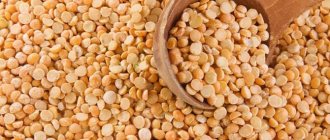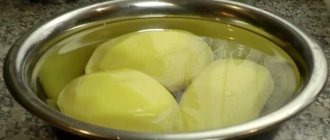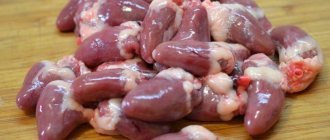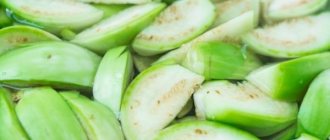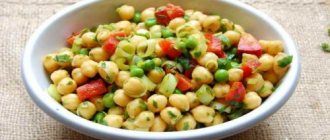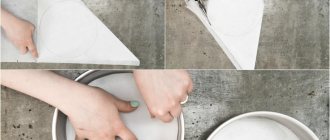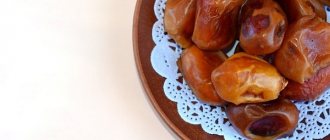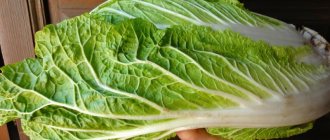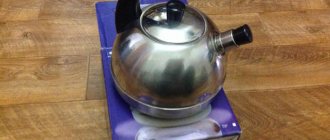In 2015, the American Journal of Food Protection published a study based on a national survey of 1,504 people. According to the survey, 69% of respondents rinse or thoroughly wash raw poultry, while the rest of the respondents do not consider this process necessary.
Some food safety experts have hypothesized why people think it's important to wash poultry. Darin Detwiler, MD, a professor at Northeastern University and a food safety specialist, says, “I think people who wash poultry do so to sanitize the product. "This is largely due to outdated beliefs and traditional Thanksgiving cards that depict the turkey being washed."
However, understanding what motivates people to wash poultry doesn't mean food safety experts approve of the process. We'll tell you why you can skip this stage of cooking.
Choose only quality poultry or cuts
You need to buy chicken in trusted stores or farm shops to be sure that the chicken is fresh and free of hormones. When choosing, it is important to pay attention to the appearance of the carcass or pieces. They should have thin white skin and pink flesh.
Fresh poultry has a neutral smell, the fabrics are smooth and elastic.
At what temperature does salmonella die in chicken?
In the laboratory, we very often find dangerous microorganisms in chicken meat - salmonella and listeria, which cause infectious diseases such as salmonellosis and listeriosis. You have probably heard about them more than once, as well as the fact that not all of the sick can be saved. Can you imagine how many dangerous microorganisms there must be in a bird carcass so that even antimicrobial drugs cannot suppress their growth. Remember - salmonella and listeria are not killed by freezing, but they are killed by high-temperature processing.
What to do. In order to protect the body from salmonella and listeria, I recommend boiling chicken meat for at least 20 minutes. If you fry chicken on a grill or barbecue, cook the product in a double boiler or convection oven, in no case should there be any uncooked or undercooked areas, especially near the bones and deep in the muscles. Temperatures above 70 °C in the thickness of the product kill salmonella and listeria in 15-20 minutes. During any technological cooking operations there should be no traces of fresh blood or raw meat.
Store chicken carcass correctly
Don't leave chicken on the table for too long. At room temperature, pathogenic bacteria that may be present on a raw carcass multiply well.
A dish made from poultry that has been left overnight in unsuitable conditions can cause severe poisoning.
Birds brought from the store should be immediately placed on the bottom shelf of the refrigerator. If frozen meat begins to melt or release juice, the liquid will fall on other products and spoil them. It is advisable to place the carcass in a container or deep plate.
For long-term storage, chicken should be frozen.
- Norm ESR after 40 years for men and women
- Lamb khashlama - how to cook at home using step-by-step recipes with photos
- Adjika from tomatoes
How to Remove Antibiotics from Chicken
When I talk about antibiotics in chicken meat, many people are perplexed: where do they come from?
From a person. All animals are susceptible to diseases, and chickens get sick more often than, for example, cows or pigs. For treatment - and more often for prevention - the bird is fed or injected with antibiotics. All producers treat poultry with antibiotics, and this is not prohibited by law, however, after treatment, a period is necessary during which the antibiotics are removed from the animal’s body. Unscrupulous producers do not wait and send the birds for slaughter before the due date has expired.
Of course, such bird carcasses are dangerous to our health. When we eat chicken meat with such drugs, antibiotics accumulate (accumulate) in our body, and if you and I get sick, we will not be able to be cured with antibiotics, since microorganisms will become resistant to the action of antibiotics.
What to do. For those who are interested in removing antibiotics from chicken and protecting themselves from their adverse effects, I recommend boiling it rather than frying it. When cooked, they are partially destroyed (the half-life of most antibiotics occurs at 100°C in 3 minutes, and at 50°C in 2.5-3 hours), and partially go into the broth, so you need to drain it and fill the chicken with fresh water. Carry out this procedure twice for guarantee.
Defrost only in the refrigerator
It takes a long time for a chicken carcass to thaw – up to 30 hours. There are several ways to do this faster, for example, on the kitchen table, in the microwave, under running water. But all these manipulations spoil the taste of the dish. You need to defrost the chicken in the refrigerator before cooking. The method takes longer, but preserves the structure of the meat and all trace elements, proteins, fats, and vitamins.
The longer the bird thaws, the tastier it will be.
Debunking myths
It would seem that washing a store-bought chicken carcass before cutting it up for frying or soup - what could be more logical? After all, it is unknown how, where and under what conditions it was stored before it appeared in our grocery basket. But, according to food technology scientists, washing chicken before cooking is strictly prohibited!
The point is not any deterioration in taste, but the fact that when washing the bird under water, pathogenic bacteria are washed away from the surface of the meat and its entrails. Whether you use running or standing water, salmonella, capylobacter and other dangerous bacteria will easily spread throughout the sink, sink, surrounding walls and your skin. This process is called aerolization.
Don’t think that as the liquid dries, the bacteria will also die. A different, less pleasant outcome is more likely, when the same salmonella “migrates” to other kitchen surfaces and cutlery.
Of course, raw chicken comes into contact with many surfaces outside the sink - with the cutting board, the blade of the knife and the cook’s hands. Since the meat is going to come into contact with so many objects, isn’t it better to wash it first to reduce the risk of infection?
It is worth understanding one important thing: contact with surfaces is controlled by the cook, and these surfaces will subsequently be thoroughly washed using cleaning and antibacterial agents, but a stream of water that hits the bird carcass will scatter over the sink, walls, and clothes of the cook with millions of microdroplets, in which already the infection will live. The “damage zone” is no less in the case of standing water. After such a “shower” for one small chicken, do you really want to do a thorough cleaning in the kitchen and wash your own clothes?
We recommend: Give alcohol without offending: 3 options for decorating a bottle for February 23
Decide which part of the carcass you will cook
The whole bird is not always used. Having decided on a dish, you need to choose which part of raw chicken is best suited. The cooking technology depends on the choice. For frying or stewing, it is more advisable to take fillet. Broiler carcasses no heavier than a kilogram are suitable for baking.
An adult bird with thick, oily skin will make delicious soups and broths.
- Russians will begin to be protected from harassment on social networks
- 9 Best Ways to Make Your Eyebrows Thicker
- How can a pensioner get a loan at low interest rates?
To wash or not to wash before cooking?
Scientists insist that chicken should not be washed. Splashes of water scatter throughout the kitchen, landing on the sink and dishes. If there were bacteria on the meat, they will end up on all surfaces around it. This can lead to salmonella infection.
It is better to immediately put the meat in a frying pan or in boiling water - the high temperature will kill all bacteria.
What happens to chicken when it is washed?
According to the US Centers for Disease Prevention and Control (
CDC), raw chicken, as well as other types of poultry and meat, are often contaminated with bacteria such as salmonella, various types of campylobacter, and Clostridium perfringens, which can cause acute food poisoning.
Unfortunately, washing your chicken will not prevent severe poisoning. Dr. Detuiler believes that the process of washing raw chicken only promotes the spread of bacteria.
The CDC adds: It doesn't matter whether you use soap or not. When processing chicken, splashes containing its juices scatter over all surrounding surfaces, falling on the countertop, dishes and other products. The United States Department of Agriculture (USDA) says this splashing water spreads bacteria up to 1 meter away from your sink. If bacteria enters your body after accidental contact with these surfaces, you risk suffering from a severe case of food poisoning.
Washing poultry before cooking only makes sense if you are on a farm and processing fresh chicken, and far from the place where it will be cooked. Londa Nwadike, MD, assistant professor of food safety at Kansas State University, talks about growing up on a farm. She remembers washing the chicken right after slaughter in the backyard. It was simply necessary to wash off the blood and remaining feathers from the meat. “The chicken from the store is already clean. No matter how hard you try, you won’t make it cleaner,” says Dr. Nwadike.
Prepare your spices and gadgets
Many seasonings go well with chicken. With each spice it acquires a certain taste. Curry, paprika, and garlic will be a spicy addition to the meat. Chili pepper or ground cayenne will add spiciness to the dishes.
Thyme, coriander, and rosemary will add exquisite aroma and originality.
In modern cooking, the cooking process is not complete without special gadgets. To cut a carcass you will need a good knife. A temperature probe is needed to measure the temperature inside the product. This will allow you to accurately determine the degree of readiness. You can freeze portions in vacuum or zip bags.
Make sure you cook correctly
Even if we do not take into account these possible consequences of processing chicken, the process of washing poultry is completely meaningless. “Thermal processing of raw meat kills most pathogenic bacteria. Washing is not helpful in this matter,” says Dr. Detuiler. “The only effective way to kill bacteria is to cook the bird at the correct temperature.”
For all poultry, the doneness temperature should be approximately 74°C (165°F). You may be able to judge the doneness of a dish by eye, checking color or texture, but the only reliable way is to use a food thermometer. And it is necessary to measure the temperature by placing the device as deep as possible in the cavity, says Dr. Nwadike.
According to a 2015 Journal of Food Protection study, about 62% of respondents use a thermometer, but only a quarter of them check the temperature of small-piece or minced foods. Food safety experts are pushing for changes in the way food is prepared.
